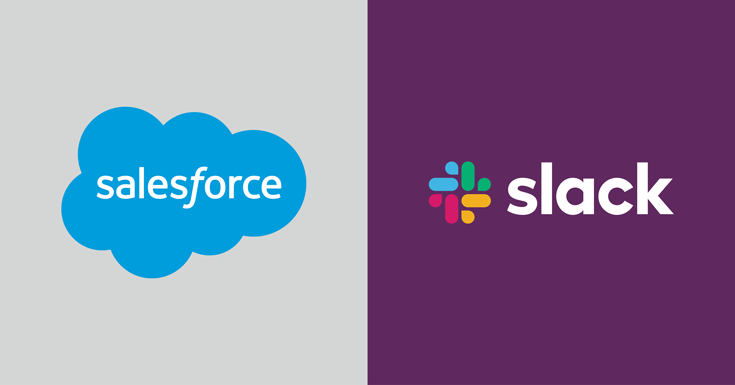Impact of the Salesforce Acquisition of Slack
Former Analyst

In December 2020, Salesforce announced the multibillion-dollar acquisition of Slack. At the time, few details were released regarding how the two companies would operate or the potential impacts of the merger. Roughly seven months later, the acquisition is complete, and the future landscape is more evident.
Current State
When Salesforce announced the completion of the acquisition, it also revealed that no immediate changes would occur to Slack’s functionality, branding, or leadership structure. More recently, the two companies held a joint event detailing how Slack’s functionality will coexist with Salesforce.
Slack functionality can now be purchased as Slack-First Customer 360. All of Slack’s existing feature and pricing tiers, including a free option, are available under the new product naming scheme. Well-known features, such as custom channels, Slack Connect, team chat, and video chats, are available as part of Slack-First Customer 360. Additionally, access to Slack’s App Directory and Slack APIs remain unchanged. New and existing customers can integrate with Sales Cloud and Service Cloud via Slack App integrations. With this integration, Slack will allow access to Salesforce data records within the application. Customers who wish to purchase Slack functionality may do so with Slack sales directly or through Salesforce.
Future State
While basic integration with Sales Cloud and Service Cloud are available, deeper integration between the two platforms remains to be seen. Salesforce has announced plans for Slack to serve as a cornerstone of its Salesforce Customer 360 approach. This approach aims to bring together multiple teams (i.e., sales, service, IT, analytics, etc.) together in a single digital workplace. Using tools such as Slack, these teams will look to Salesforce as a single source of all customer-related data and management. True integration with Salesforce (including Marketing Cloud and Commerce Cloud) will be necessary for Slack to serve in this capacity.
In an ideal world, the two platforms should be integrated with single sign-on options, allowing users to seamlessly access features and functionality. Salesforce records should update in real-time based on Slack conversations and workflows, and teams should be able to access Slack features inside their Salesforce instance.
Why Should Higher Ed Care?
Higher Education institutions that currently use Slack without Salesforce can breathe a sigh of relief. As the two companies continue to operate independently, there is little to no concern that institutions will be forced to purchase Salesforce to keep their Slack functionality. For institutions considering a customer relationship management solution, the acquisition certainly brings additional unique and robust features to the Salesforce option.
Existing higher education Salesforce customers stand to gain the most from this acquisition. While basic integration is currently available between the two solutions, as that integration deepens, the Salesforce platform will also strengthen. Once fully integrated, Slack functionality can help distanced or siloed departments partner more frequently and easily. Consider the possibility of custom support staff channels segmented to specific student populations that can update student records in real-time. Additionally, campuses currently using Salesforce without a campus-wide chat communication platform should evaluate the addition of Slack to fill that gap.
Final Thoughts
Overall, Salesforce has a long history of solid partnerships via AppExchange. Many enterprise-level solutions have been developed that function 100 percent native to the Salesforce platform. Additionally, Salesforce has created a regular cadence of feature optimization and releases, many of which originate via the IdeaExchange community. Given this precedence, it is likely that we will see more seamless and complete integration between Salesforce and Slack in future releases. Higher ed users should watch upcoming release calendars and keep a finger on the pulse of this partnership.
Categories
Share Article:

Other Posts From this Author:
© Copyright 2025, The Tambellini Group. All Rights Reserved.